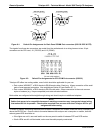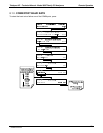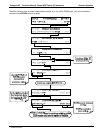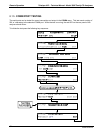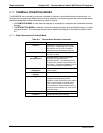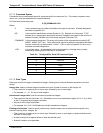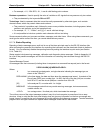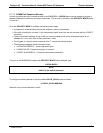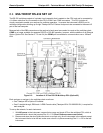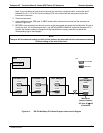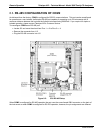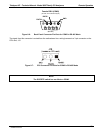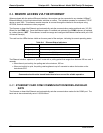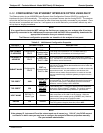
Remote Operation Teledyne API – Technical Manual - Model 300E Family CO Analyzers
158
For example, +1.0, 1234.5678, -0.1, 1 are all valid floating-point numbers.
Boolean expressions: Used to specify the value of variables or I/O signals that may assume only two values.
They are denoted by the keywords ON and OFF.
Text strings: Used to represent data that cannot be easily represented by other data types, such as data
channel names, which may contain letters and numbers.
They consist of a quotation mark, followed by one or more printable characters, including spaces, letters,
numbers, and symbols, and a final quotation mark.
For example, “a”, “1”, “123abc”, and “()[]<>” are all valid text strings.
It is not possible to include a quotation mark character within a text string.
Some commands allow you to access variables, messages, and other items. When using these commands, you
must type the entire name of the item; you cannot abbreviate any names.
8.1.7.4. Status Reporting
Reporting of status messages as an audit trail is one of the three principal uses for the RS-232 interface (the
other two being the command line interface for controlling the instrument and the download of data in electronic
format). You can effectively disable the reporting feature by setting the interface to quiet mode (see Section
8.1.4, Table 8-1).
Status rep
ort
s include warning messages, calibration and diagnostic status messages. Refer to Appendix A-3
for a list of the possible messages, and this for information on controlling the instrument through the RS-232
interface.
General Message Format:
All messages from the instrument (including those in response to a command line request) are in the format:
X DDD:HH:MM [Id] MESSAGE<CRLF>
Where:
X is a command type designator, a single character indicating the message type, as
shown in the Table 8-3.
DDD:HH:MM
is the time stamp, the date and time when the message was issued. It consists of the
Day-of-year (DDD) as a number from 1 to 366, the hour of the day (HH) as a number
from 00 to 23, and the minute (MM) as a number from 00 to 59.
[ID] is the analyzer ID, a number with 1 to 4 digits.
MESSAGE is the message content that may contain warning messages, test measurements,
variable values, etc.
<CRLF> is a carriage return / line feed pair, which terminates the message.
The uniform nature of the output messages makes it easy for a host computer to parse them into an easy
structure. Keep in mind that the front panel display does not give any information on the time a message was
issued, hence it is useful to log such messages for trouble-shooting and reference purposes. Terminal emulation
programs such as HyperTerminal can capture these messages to text files for later review.
04288D DCN5752



